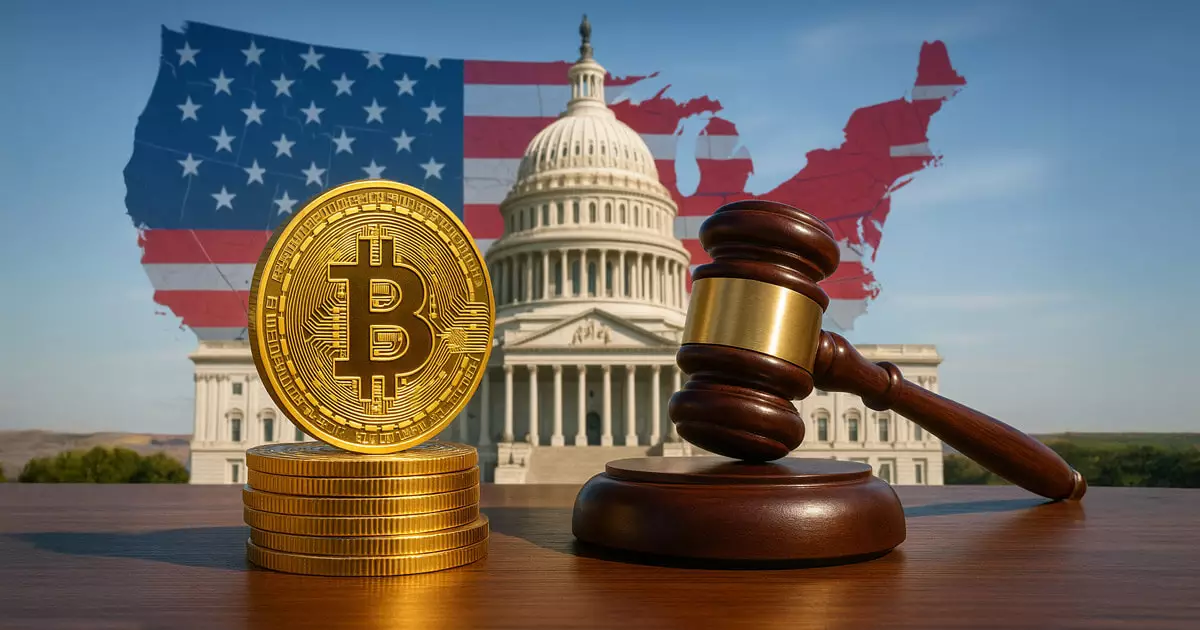As the digital asset landscape continues to evolve, the call for regulatory clarity becomes increasingly pressing. On May 29, House Financial Services Committee Chairman French Hill introduced the Digital Asset Market Clarity Act, a critical bipartisan initiative aimed at establishing a coherent framework for managing cryptocurrencies. This sweeping legislation, stretching across 249 pages, aspires to demarcate the roles of cryptocurrencies within federal law, distinguishing them as either securities or commodities while embedding new definitions such as “digital commodity” and “permitted payment stablecoin.” In a rapidly growing sector where uncertainty often breeds chaos, this legislative effort appears not just timely, but necessary.
Fundamentally, the Digital Asset Market Clarity Act seeks to order a marketplace that has been too long defined by ambiguity. Hill posited this effort as a “long-overdue clarity” that positions America as a leader in the volatile world of digital assets. With competitors like China moving swiftly to establish dominance over blockchain technology, the urgency cannot be overstated. Should the U.S. fail to enact robust frameworks, we risk ceding ground to nations willing to create less restrictive, albeit potentially perilous, operating environments for digital innovations.
Impact on New Ventures and Industry Standards
One of the standout features of the proposed legislation is its provision for primary token offerings, which allows issuers to operate under a four-year safe harbor—if their digital networks reach a “mature” status and fundraising is kept under $75 million. This is a visionary step that may pave the way for startups to innovate without the specter of immediate regulatory retribution. By proposing this buffer, the bill enables nascent projects to grow organically, testing their viability in a nascent but crucial sector.
Critics might argue that this approach could inadvertently allow for “zombie” projects to thrive, but such concerns overlook the role of market forces. The intrinsic motivation of innovation will invariably lead to the rise of some while others fade away. Empowering entrepreneurs with a leg-up while still requiring accountability helps reinforce that digital assets can be both visionary and responsible.
Consumer Protection Meets Innovation
Interestingly, the coalition backing this bill includes bipartisan figures, suggesting a broad recognition that effective digital asset governance requires balancing both consumer protection and the freedom to innovate. For instance, Democrat co-sponsors like Angie Craig and Ritchie Torres framed the bill as fundamentally rooted in consumer protection—establishing important safeguards and laying out “rules of the road” for businesses venturing into the digital asset ecosystem. This dual-edge strategy could pave the way for more entrepreneurs to enter the market confidently, knowing they are safeguarded from potential pitfalls that arise from unclear regulations.
Moreover, having the CFTC oversee spot trading and brokerage activities serves to consolidate regulatory authority, fostering an environment where accountability and transparency can flourish. Some may argue that this transition could create burdensome oversight; however, when it comes to financial assets that can significantly impact the economy, it’s imperative that adequate checks are in place.
Unpacking the Legislative Journey Ahead
The Digital Asset Market Clarity Act emerges amidst a wave of discussions and inputs from stakeholders in the industry, actively encouraging dialogue between lawmakers, industry representatives, and academia. The process is a testament to understanding that the multi-faceted digital asset landscape is better served through collaboration than top-down imposition. The joint markup sessions planned between the House Financial Services and Agriculture committees before the full chamber vote demonstrate a refreshing willingness to listen to diverse voices, illustrating a commitment to creating a framework that is as robust as it is responsive.
As we stand on the brink of what could be a seismic shift in the financial world, this bill holds the potential to set a standardized regulatory bar that may apply well beyond the U.S. shores. Even more critically, it has the power to redefine how we view ownership, utility, and investment in an age dominated by digital platforms. The forthcoming committee votes will be pivotal in determining not just the legislation’s fate, but the overall future of digital asset innovation in America.
The stakes are high, and the path forward is laden with both opportunity and risk. While embracing regulation aimed at clarity is essential, it’s equally crucial that we maintain a spirit of innovation, ensuring that the United States not only participates in the digital asset revolution, but leads it with a sense of purpose and resilience.
















Leave a Reply